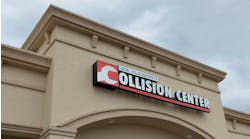Mike Cortez, collision center director at Gullo Toyota of Conroe, Texas, still recalls his reaction when, nearly two decades ago, his bosses informed him that they wanted to start surveying customers.
“I said, ‘Are you crazy? We’re not gonna survey our customers. Can you imagine the laundry list of things they’re gonna complain about?’” Cortez recalls. “I really was negative about that. … And it’s the exact opposite.
“You thought all you were going to get was the complaints out of customers, but it’s [often] the ones that really appreciate what you did for them.”
Yes, you can now consider Cortez a convert. The 35-year collision repair industry veteran knows the value of customer service index (CSI) scores and the process of collecting that valuable feedback. The collision center director wants to constantly gauge his business’ treatment of customers, timeliness, quality and communication. And, he knows it’s tough to improve without receiving constructive criticism on occasion.
But which CSI delivery method is best for your shop? And, how can you benefit from using particular methods? Virtually all shops use customer service surveys in some fashion, but many fail to use the information to its potential. With that in mind, FenderBender sought insight from industry experts.
Phone Calls
In Cortez’s experience, customers like the chance to sound off to body shop employees and have the potential for a back-and-forth conversation, as long as they’ve been given a heads up that they might be called for a survey.
“If within a couple three or four days—maybe at the most 10—you’re able to get ahold of them,” Cortez says of customers, “they seem to be appreciative of the repairs, and they like to tell you about it.”
According to Dusty Dunkle, president of Customer Research Inc., phone follow-ups are the only method of survey collection “that can result in a more than 50 percent completed survey ratio.
“All methodologies have their pros and cons,” Dunkle says. “The key is identifying any customer that had issues with their experience; This sets up the opportunity for the shop to reach back out and do what it takes to satisfy the customer.
“Telephone follow-up typically provides the most detail,” Dunkle adds, “because the phone agents have the ability to probe and gather additional feedback in any area.”
Bobby Cobb, co-owner of Today’s Collision Centers (with two locations in Massachusetts), appreciates the fact that emails offer the ability for a response that’s done on the customer’s own time. After all, a customer email can be sent well before or after business hours.
“With an email, you can easily send a link to the review platform, and your message will be in their inbox as a reminder,” notes Cobb, who says his shop has had the best luck with sending survey-related emails. “You have a short window of time to possibly correct an issue; Follow-up should be within 24 hours [because] customers will want to respond right away.”
Granted, email un-open rates are high, at nearly 85 percent. But Cobb has noticed that customers that do respond to emailed surveys seem more at ease as opposed to via phone calls, and, as a result, tend to communicate openly and provide valuable feedback.
Customers who complete a survey electronically and choose to write a review can then be prompted to share their review on websites like Facebook and Yelp, which offer potential for shops to gain inexpensive publicity. Another possible benefit: Once a line of communication is opened via email, a shop can then market to that customer in the future (provided they give an opt-out option), through the use of email blasts and thank yous.
Snail Mail
Despite all the technological advancements our society enjoys in 2017, traditional mail still has a solid open rate. In fact, there’s a 98 percent open rate on mailed surveys. Additionally, the Direct Marketing Association notes that 70 percent of Americans feel traditional mail is more personal than the Internet.
A quick, concise mailing can still capture the attention of customers, even in the digital age. However, mailings from collision repair shops can stir up frustrating memories for customers, so they must be worded carefully.
“It’s crazy; we’ve sent out mailers—with less than a 2 percent response,” Cortez notes. “It’s as though [customers say] ‘Look, I’m done with it.’”
Once a shop has narrowed down a group of customers that do respond to snail mail, though, that group can be marketed to in the future, in the form of mailed-out anniversary cards, for example. After all, customers that prefer traditional mail typically appreciate the personal touch it presents.
Text
Statistics certainly seem to indicate that texting is the way of the future and, for many consumers, the present. According to the Pew Research Center, texting is the most widely-used app on smartphones, with 97 percent of Americans using it at least once daily.
And, nowadays, most cellphone users have unlimited text plans. So, in theory, your shop’s text messages are almost always within arm’s reach of customers, if that survey option is utilized.
Of course, texting customers can be problematic because, as Dunkle notes, doing so requires expressed consent. And, using text messaging for surveys rarely inspires in-depth responses.
Still, texting has its merits. Many customers simply prefer the survey method that will be as unobtrusive as possible which, for many, entails receiving test messages.
And, if a shop uses text (or email) surveys, staff members don’t need to keep track of sending, receiving or indexing; All of that can be done automatically by estimating software. Once a survey has been taken, shops will typically then receive a “hotsheet” generated by any survey with less-than-perfect scores. Then, a staff meeting can be held to discuss the survey’s findings and address any underperforming areas.
Mix and Match
Using multiple means to seek customer feedback also lends obvious value, if a shop owner is hesitant to rely on one survey delivery method in an era of evolving technology.
“You just have to be flexible,” Cortez says. “I try to ask the customer at the beginning, ‘What’s the easiest for you? Is it easier to call you, is it easier to text you? Is it easier to email you? What’s the best way you’d like?’”
Regardless of the method used, all CSI programs should offer aggregate reports, benchmarking a body shop against a national database, and then, Dunkle says “drill down on CSI by estimator and technician this allows the shop to continually monitor employee performance, adjust, and improve.”
Overall, when it comes to CSI survey collection, the main thing to keep in mind is making sure you get consistent, valuable feedback from a wide swath of your customer base.
“My experience has been, just listen,” Cortez says in regard to customer feedback. “Once they don’t feel like you’re listening, man, it becomes pretty negative, quickly. This can be a job, or it can be a service.
“Our job,” Cortez says, “is to show true empathy for our customer through communication.”




